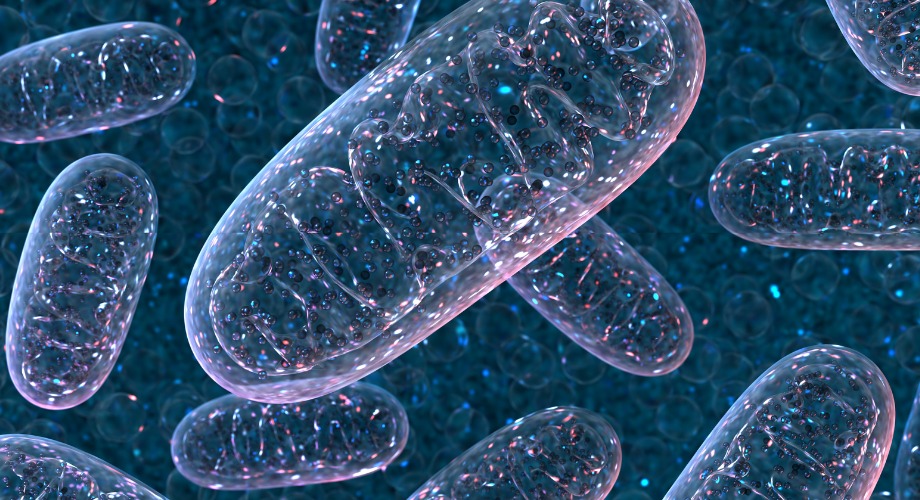
Mitochondria exist in virtually all plants and animals, as well as in many simpler organisms. They're believed to have originated as bacteria that could live symbiotically inside the cells of early life forms, but today they're essential producers of chemical energy in all complex species. Their need for oxygen to produce this energy is why animals breathe.
Mysterious ‘mutational freedom’ in mitochondrial molecule may have been a key adaptation in animal evolution
Mitochondrial transfer-RNAs evolved special mutation-resilient structure in complex animals.
February 28, 2020
JUPITER, FL — A set of molecules needed for efficient energy production in cells apparently underwent a radical change during early animal evolution so they could continue to function despite their relatively high mutation rate, according to a new study from scientists at Scripps Research.
In the study, published in Nature Communications, the scientists analyzed a set of 22 closely related mitochondrial molecules. Mitochondria are tiny, bacteria-like “organelles” that are the major producers of chemical energy in cells; they contain their own small DNA genomes, which are separate from the main genome in the cell nucleus. The 22 mitochondrial molecules, called mitochondrial transfer RNAs (mt-tRNAs), play a central role in translating the information in mitochondrial genes into mitochondrial proteins.
The researchers found evidence that as more complex animals evolved from the simplest ones, their mt-tRNAs evolved to have an unusual basic structure, which conferred a remarkable capacity to keep working properly despite frequent mutations to their genes. Mitochondrial DNA is more vulnerable to mutations, especially in complex animals.
“The mutational freedom of these novel mt-tRNA structures appears to be a powerful adaptive mechanism for withstanding the enhanced mutation rate of mitochondrial DNA in higher animals,” says senior author Paul Schimmel, PhD, a professor in the Department of Molecular Medicine at Scripps Research.
Mitochondria are found—in numbers up to thousands per cell—in virtually all plants and animals, as well as in many simpler organisms. They're widely believed to have originated as bacteria that could live symbiotically inside the cells of some early, simple life forms. But after hundreds of millions of years of evolution, they have become essential producers of chemical energy in all complex species. They use oxygen to produce this energy—and that need for oxygen is why animals breathe.
One of the problems with mitochondria, from a human health perspective, is that they are especially vulnerable to damage. Mitochondria contain their own circular DNA genomes, which in humans encode 37 mitochondrial molecules including the 22 mt-tRNAs. Compared with ordinary DNA in the cell nucleus, mitochondrial DNA is not as well protected from DNA-damaging compounds that sometimes arise in cells. In fact, mitochondria themselves give rise to many DNA-damaging oxygen compounds as byproducts of their own energy-making process—especially in more complex animals that move around and burn lots of energy doing so. Thus, animal mitochondrial DNA has a faster mutation rate than animal cell-nucleus DNA.
Damage to mitochondrial genes also can’t be managed as easily as in cell-nucleus genes. In sexually reproducing organisms, mitochondria and the DNA they contain originate always from the mother’s egg cell. There is no “recombination” with paternal DNA to remove defects, as occurs for the main part of the genome. Since mutations that occur randomly are much more likely to be harmful than helpful, genomes that are passed along in this manner could simply accumulate defects, from one generation to the next, until they become totally dysfunctional. Biologists still do not fully understand how mitochondria have avoided this fate.
In their study, Schimmel and colleagues, including co-corresponding author Bernhard Kuhle, PhD, a postdoctoral research associate in the Scripps Research Laboratories for tRNA Synthetase Research, addressed this question with an analysis of mitochondrial tRNAs. The 22 distinct mt-tRNAs account for most of the molecules encoded by the mitochondrial genome. Like non-mitochondrial tRNAs, these molecules work as essential “decoders” of the genetic code, linking nucleotide sequences copied out from genes to corresponding amino acids, which are the building blocks of proteins.
The scientists analyzed the evolution of modern animal mt-tRNAs by comparing the mt-tRNAs of simple and complex animals and other, more evolutionarily distant organisms, and by mutating human mt-tRNAs to see how this changed their functions.
They found evidence suggesting that when the first moderately complex animals appeared on Earth, their mt-tRNAs evolved smaller, simpler structures, which made them more likely to maintain their decoder functions even when they accumulated new mutations.
This adaptation for “mutational freedom” would have allowed the genes for mitochondrial tRNAs to mutate even faster, and although mt-tRNA-linked genetic diseases are not very common in humans in an absolute sense, mt-tRNA genes are considered a relative hotspot for genetic disease. “From this perspective, tRNA-associated mitochondrial diseases are a necessary price we pay for the high adaptive power of these important molecules,” Schimmel says.
Authors of “Relaxed sequence constraints favor mutational freedom in idiosyncratic metazoan mitochondrial tRNAs” are Bernhard Kuhle and Paul Schimmel of Scripps Research, and Joseph Chihade of Carleton College.
Support was provided by the National Institutes of Health (R01 GM125908, R15 GM071392), the National Foundation for Cancer Research and the Skaggs Foundation.
For more information, contact press@scripps.edu

